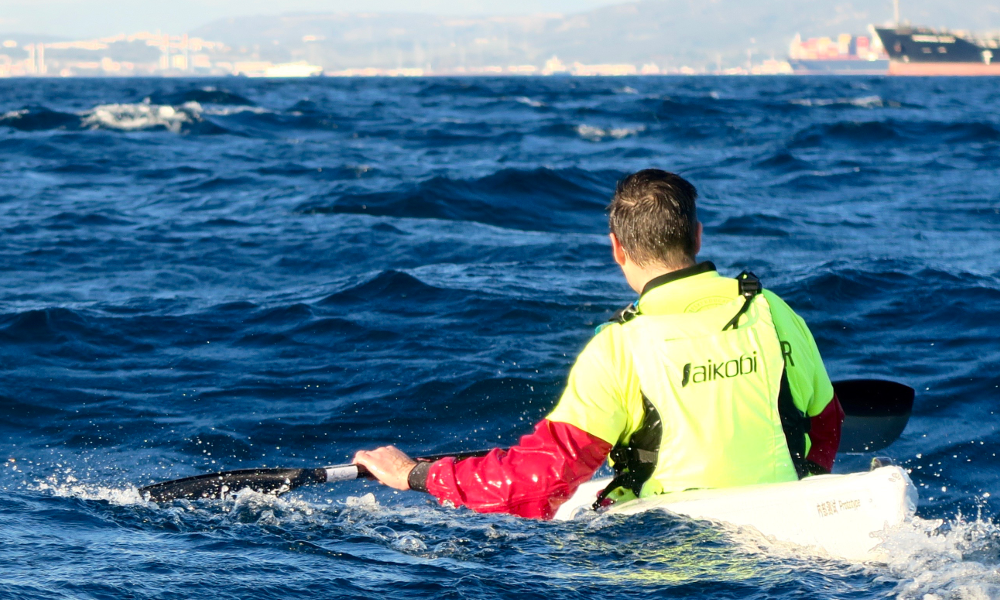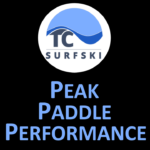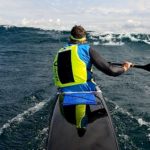Understanding Wave Catch-ability
It is that time of year again when I try to come up with an original approach to helping downwind paddlers of all levels, improve their game. I’m actually really excited about this blog, which came to me as I was brainstorming how to teach people to be the best tandem drivers they can be and catch the most runs with the least effort, whereby giving the passenger the best possible experience.
Anyone who’s ever taken a beginner out in a tandem will know that you have to change your mindset and approach or you’re not going to have a lot of fun. The tandem with a beginner in the back is a different animal. But ultimately the solution is very simple. You just have to set your focus on the easy runs and take it from there. But of course that is much easier said than done, so I’ve created the below blog to help conceptualize what this all means.
You’ll see in the table below, that I’ve assigned a “catchability ranking” to the different waves/runs that we need to decide to chase or not. But first, some clarification on what exactly this means:
- The wave that we are assessing is not actually the wave we ride. Rather it is the wave in front of the wave we will ride. But don’t get hung up on this. It is mainly to make clear that we don’t look behind when paddling downwind, rather we use the wave we can see as a proxy for speed/direction to position and ride the wave behind it.
- The assessment of any wave is based on a split second point in time when we are making a decision on what to go for. While waves are always mixed in size and moving at slightly varying speeds and angles, it is not that we are assessing the wave itself in isolation. Rather, the assessment of a wave on the scale of “catch-ability” is based on a number of factors including:
- The speed of our boat relative to the speed of the wave
- The direction we’re traveling relative to the direction of the wave
- The distance the wave is in front of us as well as laterally side to side
- The size and steepness of the wave
- What stands between our boat and the wave – smooth water, smaller waves, etc.
- It is also worth noting that everyone’s scale will be unique based on paddling skill levels and physical conditioning. One persons 4 or 5 may be another person’s 10, it is all relative.

Some Key Tips on how to use this ranking:
Practicing Downwind Finesse
- Focus on the 1 and 2s and try to ride them as long as you possibly can. Try to leverage the 1s and 2s to catch the bigger 3s, 4s, and 5s. This is ultimately the game when trying to go the furthest distance on the fewest strokes.
- Note: this is not PR / Race pace paddling, but it will help you develop more finesse to ride the waves longer which will ultimately make you faster
When you start flailing on a downwind run
- It is easy to get sucked into chasing the big runs, especially if you’re out paddling with mates. But if you find yourself struggling to find your rhythm and flow, it likely means you’re chasing 5s and 6s and ignoring the 1s and 2s. Take a reboot, catch a few easy runs and within seconds you’ll see that big one lining up in front of you
Paddling a Tandem
- I’m convinced the absolute secret to paddling the tandem is to focus your efforts on the 1s and 2s. This is especially the case when you’re taking a newbie with a limited power/weight ratio.
- Missing runs in a tandem can be extremely frustrating. The back passenger will really struggle to get into the paddling rhythm and the boat tends to get into a wonky cycle when falling off the back of a wave. It is hard to describe, but basically it starts to feel like your turning to late, can’t keep it going the right direction, and can’t accelerate in time to catch anything.
- On the other hand, if you focus on the absolute easiest runs to catch, you can establish a nice comfortable rhythm and pace for the paddler in the back and you’ll find the added momentum of the tandem means that once you start building solid speed, the big runs will be there
Racing
- When racing you’ll likely be focused on chasing and catching the 4s, 5s, and 6s but if you start struggling to catch those, it is time to reset your focus.
- If you’re neck and neck with a competitor and have the juice, you may push for a 7 or 8 to gain a little gap
A few additional thoughts
There are certainly days when the 1s and 2s simply don’t exist. When the wind is fading but the swell is still up, or when conditions are messy and there is a lot of chop overlaying the nice runs. On these days, everything seems to be a 5 or above, and that may well be the case. But, don’t be too quick to convince yourself of this until you’ve really given it a fair effort to find the 1s and 2s
In this blog I decided not too overcomplicate by addressing the concept of chasing the waves that are going the direction you need to be going. But this is of course very critical and may mean that you’re not actually taking the super easy 1s and 2s, rather paddling across them and pushing for 3s and 4s, that are heading the right direction for you.
I’ve had a few downwind paddles over the course of writing this blog and have tried asking myself if this scale truly reflects how I’m thinking and deciding about the waves. Like most things surf related, I can’t say it is exact and will always be 100% applicable, but I do think it provides a conceptual framework that perhaps builds on the age old mantra “small leads to big” and provides a bit more to work with.



